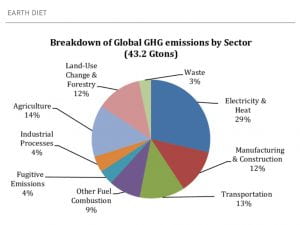This past project in science was based around the matter cycles. Matter is what makes up pretty much everything in our atmosphere. The different cycles of matter such as phosphorus, nitrogen, carbon and so many others are what keep our earth alive and running. They all serve an important purpose, however when humans started making machines and technology that didn’t have a positive effect on the planet, we got in the way of the cycles. Now the cycles are out of balance and have big issues that need to be solved.
For our project we were asked to all pick a cycle, then find a problem occurring within it and find a way to fix it. We weren’t asked to solve the worlds problems, but we needed to find a way that theoretically cold be done to help or fix a problem within our cycle. Even thought we all had different cycles, I learned that they are all intertwined and work together. They all depend on each other enable to work.
Moving on to my project which I created with Aedan, we studied the carbon cycle. First we started by asking how we might find a solution to the cow green house gas (GHG) emissions by implementing a new diet. Cows are a huge contributor to the global GHG emissions. They produce on average 70 to 120 kg of methane as well as other green house gases, per year. We quickly found that foods such as garlic, onions or seaweed can cut cow emissions by almost 100 percent. However this idea had already be found and was taking place in farms around the globe. It was still a great start because from there we decided to change our idea from the cows diet to our human diet. We focused on how cows are major contributors to the emissions of harmful gases such as methane and CO2. The question we asked was “how might we implement a new system for people’s beef consumption to overall reduce the demand for beef and in conclusion reduce GHG emissions from cows per year?”
Canada’s beef consumption was 976,800,000kg in 2018, per person that’s 26.4kg of beef per year or 2.2kg of beef every month. Our idea was that if we could come up with a system for everyone in Canada to cut beef out of their diet for one month a year, we would reduce our 976,800,000kg beef consumption down to 895,400,000kg. Decreasing Canada’s overall beef consumption per year by 9%. The CO2 being taken out of the atmosphere each year would be around 3,104,593 tons.
This is when we came up with “Earth Diet” the one month a year that people don’t eat beef. Which will help to reduce the overall demand for beef and reduce the GHG emissions into the atmosphere per year by cows.
Now let me quickly recap on a few curricular competencies and habits of mind that I continued to work on and grow during this project. The first curricular competency I feel that I grew on during this project was to evaluate other methods and experimental conditions, including identifying sources of error or uncertainty, confounding variables, and possible alternative explanations and conclusions. I grew my understanding and ability of this particular competency throughout this project because I had to use it when our project had many failed ideas and attempts. But we came back to the main idea of the project and started again which helped us to create an awesome solution to this very real problem in out world. Although this was for sure the biggest competency I worked on during this project I also explored others such as formulating multiple hypotheses and predicting multiple outcomes so that I wasn’t fixed on one particular outcome, product or solution which is super important when solving a problem because it 100% won’t turn out the exact way you thought and being able to adapt to other possibilities is a crucial skills to obtain.





